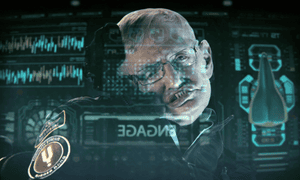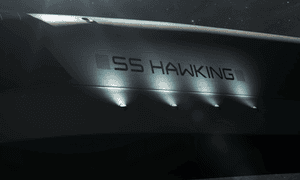
There’s no shortage of theories when it comes to determining the true nature of our reality. We are like a race with amnesia, searching for an answer that most probably exists, but has yet to be discovered. How did the universe begin?
Well, according to new research, it may not have begun through a Big Bang. Instead, the universe may simply have always existed. Derived from the mathematics of general relativity, the theory compliments Einstein’s Theory of General Relativity. As the study’s co-author Ahmed Farag Ali of Benha University explains, “The Big Bang singularity is the most serious problem of general relativity because the laws of physics appear to break down there.”
The Big Bang Theory postulates that everything in existence resulted from a single event that launched the creation of the entire universe and that everything in existence today was once part of a single, infinitely dense point, also known as the “singularity.”
Below is a model for this theory.

With this diagram in mind, the most pressing question then becomes, who or what is the thing blowing the balloon that is our universe? Who is the guy?
There’s no shortage of theories when it comes to determining the true nature of our reality. We are like a race with amnesia, searching for an answer that most probably exists, but has yet to be discovered. How did the universe begin?
According to Nassim Haramein, the Director of Research for the Resonance Project: ” ‘For every action there is an equal opposite reaction.’ is one of the most foundational and proven concepts in all of physics. Therefore, if the universe is expanding then ‘the guy’ (or whatever ‘he’ is), who is blowing up that balloon, has to have some huge lungs that are contracting to be able to blow it up” (source).
This marks just one out of many criticisms of the Big Bang Theory, but there is so much more to consider. Can something come from nothing? What about quantum mechanics and the possibility that there is no moment of time in which the universe did not exist?
The theory also suggests that there are no singularities or dark matter, and that the universe is filled with a “quantum fluid,” which is filled with gravitons. According to Phys.org:
The scientists propose that this fluid might be composed of gravitons—hypothetical massless particles that mediate the force of gravity. If they exist, gravitons are thought to play a key role in a theory of quantum gravity.
In a related paper, Das and another collaborator, Rajat Bhaduri of McMaster University, Canada, have lent further credence to this model. They show that gravitons can form a Bose-Einstein condensate (named after Einstein and another Indian physicist, Satyendranath Bose) at temperatures that were present in the universe at all epochs. (source)
As you can see, when quantum mechanics are thrown into the equation, everything changes. This new theory suggests that the universe could have always existed and there is no “beginning” as we understand it. Perhaps it was just an event that did occur that we perceive as the beginning, or perhaps the event occurred not from nothing, but from something. Again, who is that guy blowing on the balloon in the picture? There is something there that has yet to be discovered.
“As far as we can see, since different points in the universe never actually converged in the past, it did not have a beginning. It lasted forever. It will also not have an end…In other words, there is no singularity. The universe could have lasted forever. It could have gone through cycles of being small and big. Or it could have been created much earlier.”
– Study co-author Saurya Das at the University of Lethbridge in Alberta, Canada (source)
What We Know Is Often Just Theory
It’s clear that we do not yet have a solid explanation for what happened during the Big Bang, or proof that it even happened at all. This new theory combines general relativity with quantum mechanics to make a new and interesting case for our universe’s history, but at the end of the day, it remains a theory.
Theories about multiple dimensions, multiple universes, and more have to be considered as well. When looking for the starting point of creation, our own universe might not even be the place to start — a difficult idea to consider given that we cannot yet perceive other factors that have played a part in the makeup of what we call reality. Harder to grasp still is the fact that quantum physics is showing that the true nature and makeup of the universe is not a physical, material thing!
There is still simply too much we don’t understand, and there are new findings in modern day physics that delve into non-materialistic science that many mainstream materialistic scientists have yet to grasp and acknowledge.
I’ll leave you with a quote that might give you something to think about:
“A fundamental conclusion of the new physics also acknowledges that the observer creates the reality. As observers, we are personally involved with the creation of our own reality. Physicists are being forced to admit that the universe is a ‘mental’ construction. Pioneering physicist Sir James Jeans wrote: ‘The stream of knowledge is heading toward a non-mechanical reality; the universe begins to look more like a great thought than like a great machine. Mind no longer appears to be an accidental intruder into the realm of matter, we ought rather hail it as the creator and governor of the realm of matter.’ ”
– (R. C. Henry, “The Mental Universe”; Nature 436:29, 2005)
“Despite the unrivaled empirical success of quantum theory, the very suggestion that it may be literally true as a description of nature is still greeted with cynicism, incomprehension and even anger.”
– (T. Folger, “Quantum Shmantum”; Discover 22:37-43, 2001)







